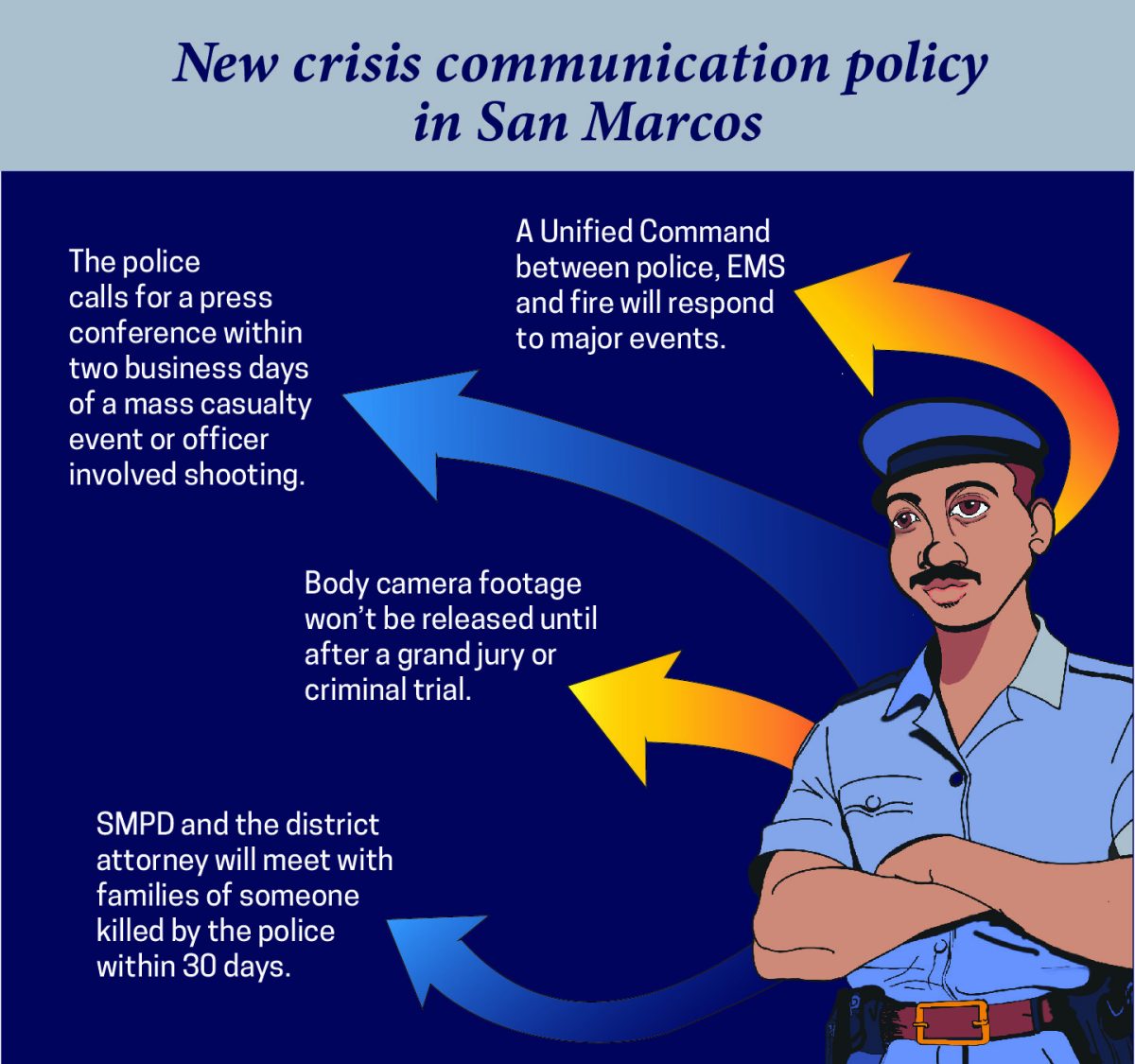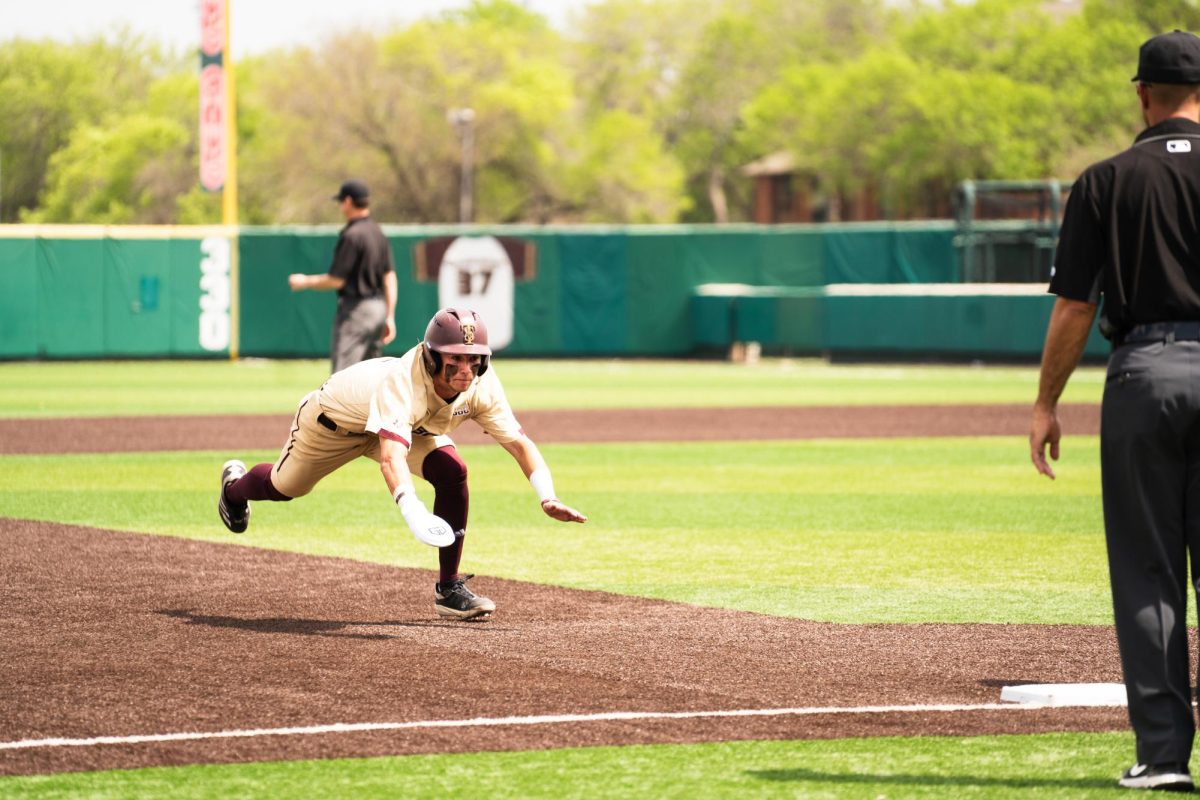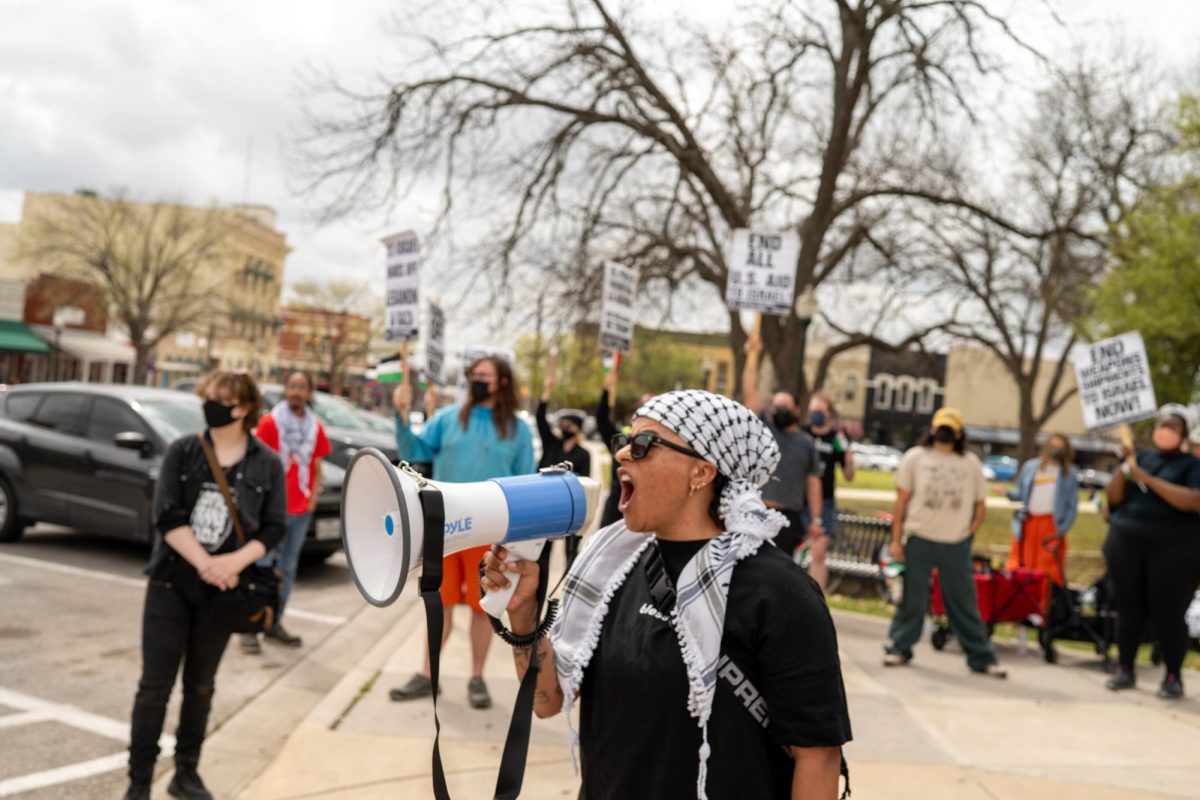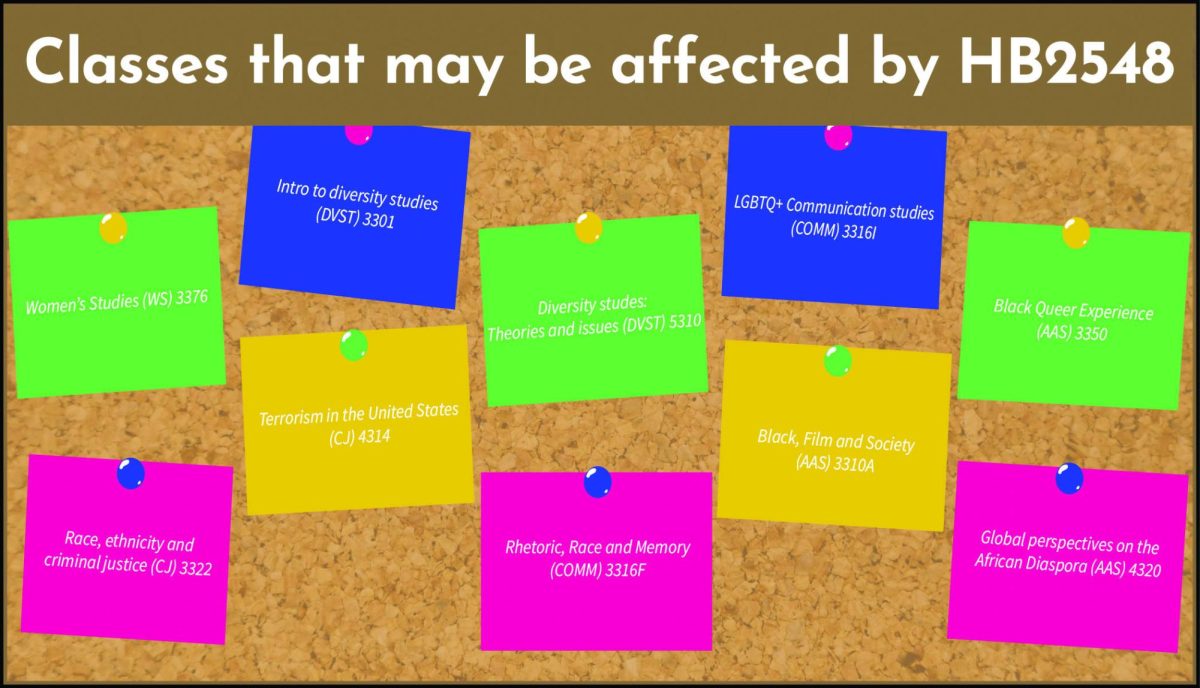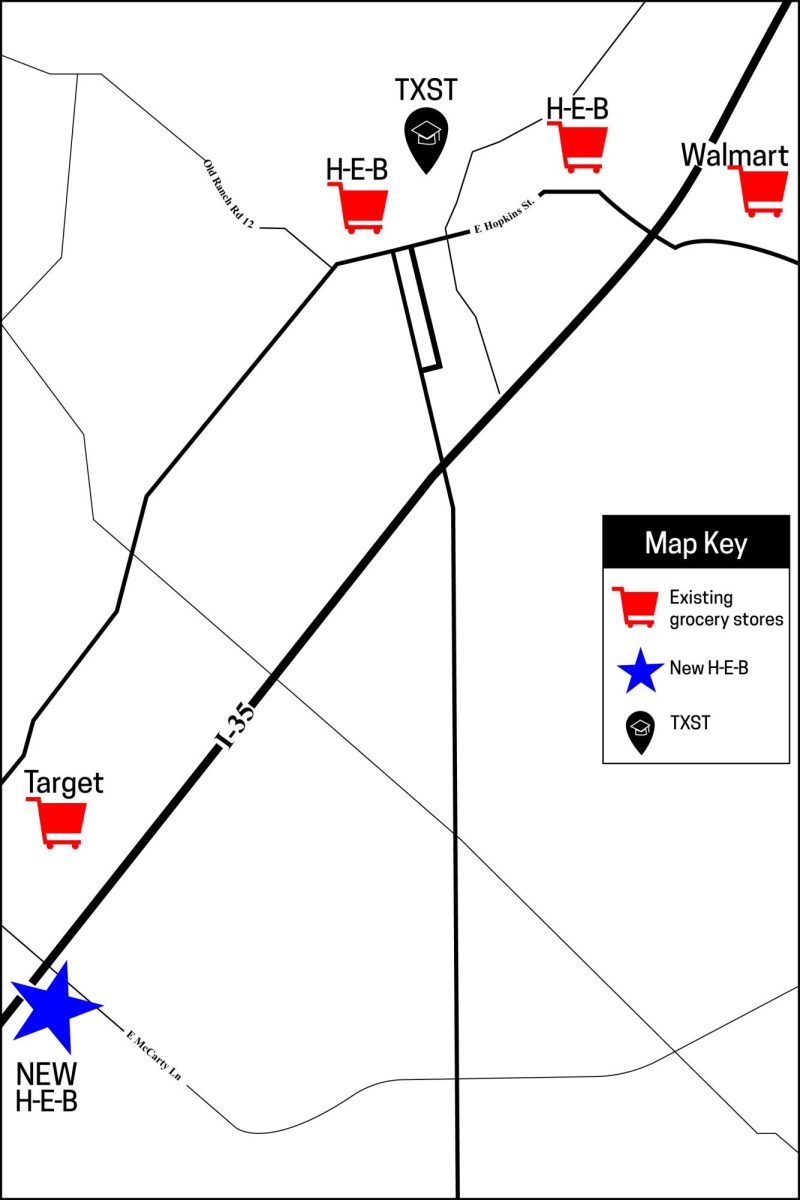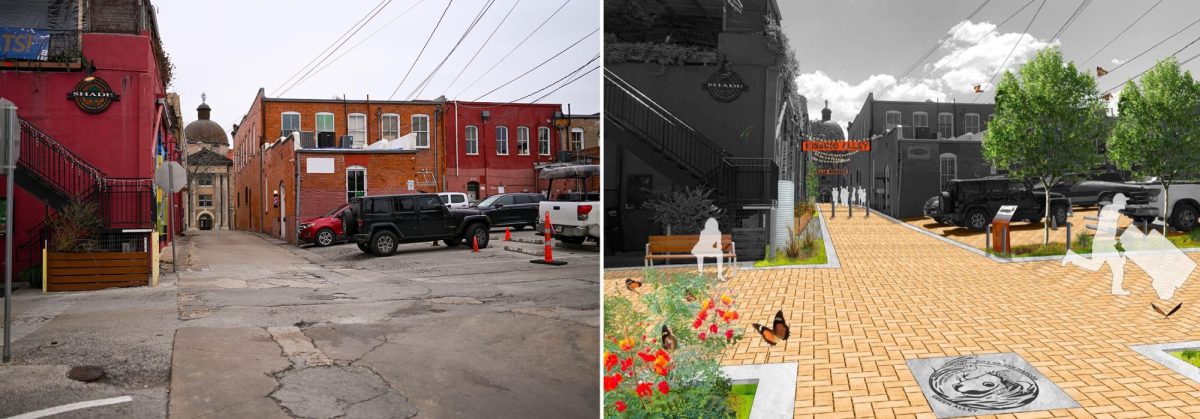The city of San Marcos established its first formal crisis communications policy in July.
The policy controls the city’s communications with the public and media in the aftermath of a crisis such as a mass casualty event, officer-involved shooting and other events.
The policy was created due to advice from the Chief’s Advisory Panel, public comments at City Council meetings and conversations with relatives of people who were killed by police, San Marcos Police Department (SMPD) Chief Stan Standridge said in a press conference.
“In a crisis, timely, accurate and effective communication is essential. The purpose of the Crisis Communications Policy is to ensure that San Marcos residents, residents in the surrounding area, city employees and their families, visitors and the media are kept informed in case of a law enforcement crisis,” the policy wrote.
According to Standridge, the policy was discussed for at least three months before being officially adopted.
During a crisis, the SMPD and city manager’s office will establish an Incident Command System (ICS), which will coordinate a response and handle communications for the duration of an incident. If an incident involves multiple departments, such as a fire, a Unified Command is established to manage communications.
“Public messaging remains the responsibility of Unified Command until delegated. In our case, most press conferences would be done by the respective chief [police or fire], while most messaging would be done by communications. This is subject to change, and will change, depending on the severity and length of the crisis,” Standridge wrote in an email to The Star.
The new policy requires the release of initial information within two hours after an incident occurs. The policy also requires updates to be released as new information becomes available.
“A communications specialist will respond to the site to coordinate media inquiries and updates. This specialist, with coordination from the Director of Communications or his/her designee, will use appropriate public messaging to provide timely information to citizens,” the policy wrote.
The policy requires SMPD to hold a press conference within two business days of a mass casualty event, officer-involved shooting or any other crisis.
SMPD has already held two press conferences under this policy, one in response to a death in police custody and one for the release of body-worn camera footage of the death of Malachi Williams.
The policy also prohibits the release of body-camera footage during an ongoing investigation, grand jury proceedings or a criminal trial. There is an exception for family members of those killed in an officer-involved shooting to see the footage within 30 days, as long as they are not also involved in the case.
“There is no legal goal achieved by exposing evidence to people who are not involved in the investigation of a case. There seems to be a political goal, but we are not politica” Hays County District Attorney Kelly Higgins, who was an advisor for the policy, said. “There’s no legitimate reason to publish evidence ahead of trial except to satisfy an urge to voyeurism.”
The policy requires the city to evaluate its communications after every incident and to gather feedback from its stakeholders. Standridge said that residents can contact him to give feedback on the policy.
The city’s new crisis communications policy only applies to San Marcos departments, such as SMPD and the San Marcos Fire Department. Texas State University Police Department (UPD) has its own communications policies.
According to UPD Chief Matthew Carmichael, UPD’s policies are set by Lexipol, a company that writes policies for fire and police departments across the country. Carmichael said UPD does not write their own policy to due a lack of legal resources and expertise.
“There are very few police chiefs I know that can write police policy. [Some chiefs] may do it, but they probably shouldn’t,” Carmichael said.
UPD’s policy does not set out requirements for when to hold a press conference, or when to release body-worn camera footage. Instead, concerned citizens or members of the media will have to file public information requests to gain access to information not included in TXST Alerts or emails from UPD.
Carmichael also said that all UPD officers have access to the UPD policy manuals on their phones and must answer questions on the policy daily.



